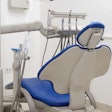More than 60% of women dentists reported experiencing violence at their dental practices, creating an intimidating work environment for most clinicians. The Brazilian study was published recently in Scientific Reports.
Dentists in the public sector, those with more than a decade of experience, or clinicians working with assistants reported the highest rates of violence, the authors wrote.
“The results highlight the intimate nature of dental practice as a potential vulnerability factor, particularly due to the prolonged close contact with patients,” wrote the authors, led by Dr. Nikolaos Angelakopoulos of the University of Bern in Switzerland (Sci Rep, July 9, 2025, Vol. 15:1, pp. 1-7).
Startling rates of violence have been observed in healthcare settings, including dental practices. Some dentists have even encouraged organized dentistry to stop staying silent on gun violence and stricter controls due to the rising rates of violence in healthcare settings. Also, states in the U.S. have or are trying to beef up laws to better protect dentists and other healthcare workers.
To explore how vulnerable female dentists were to violence, a cross-sectional study that included adult female dentists working in public or private settings in São Paulo, Brazil, was conducted.
Of the 165 women dentists who responded to the survey, 103 (62.4%) reported experiencing some type of violence at work. Of those who had experienced violence, 95 (75.8%) reported it had created an intimidating environment, the authors wrote.
Furthermore, the highest rates of violence were seen among dentists working in the public sector (78.8%), with assistants (65.1%), those with at least a decade of experience (65.2%), and those who had been stalked by patients or their companions (74.7%), they wrote.
Additionally, there were statistically significant correlations in this study. Women clinicians who reported being intimidated or stalked by patients or their companions had greater odds of being exposed to violence.
Specifically, intimidation raised the probability of experiencing violence by 16 times compared to dentists who had not been intimidated in the past (p < 0.001). On a similar note, dentists were three times more likely to experience violence if they had been stalked, Angelakopoulos and colleagues wrote.
Nevertheless, the study had limitations, including that the data gathered were self-reported. These types of data may introduce recall and reporting biases, the authors wrote.
“This study underscores the importance of implementing preventive and protective strategies, including digital monitoring tools and institutional support, and advocates for accessible mental health resources to help mitigate the impact of workplace violence on female dentists,” Angelakopoulos and co-authors concluded.




















